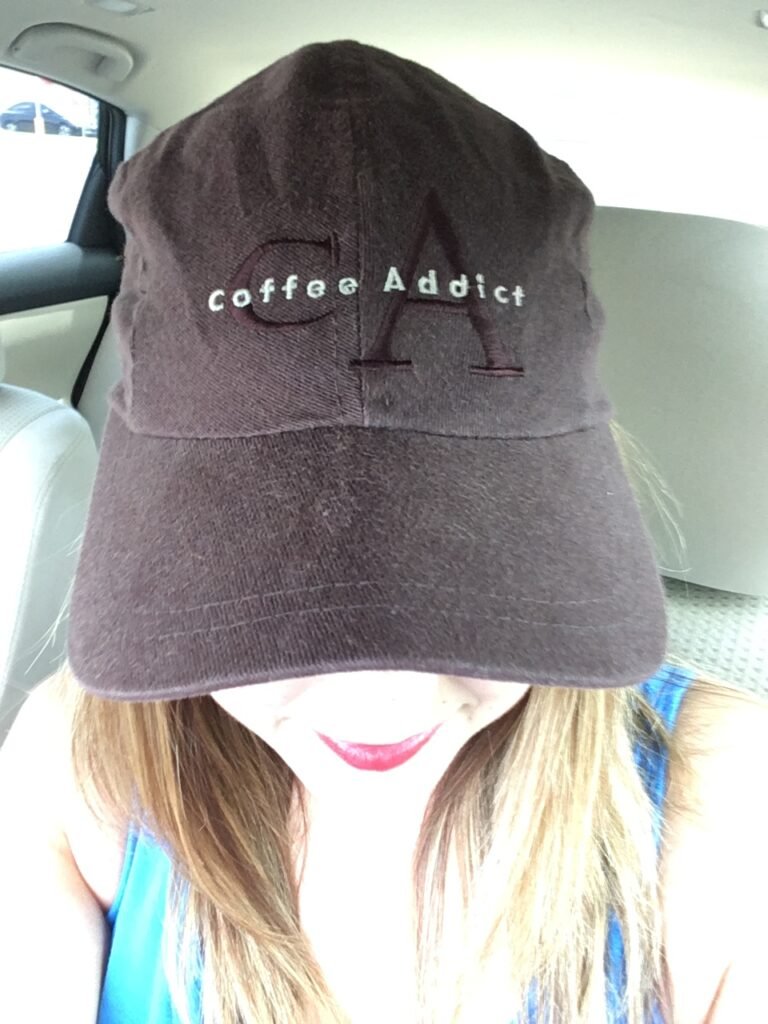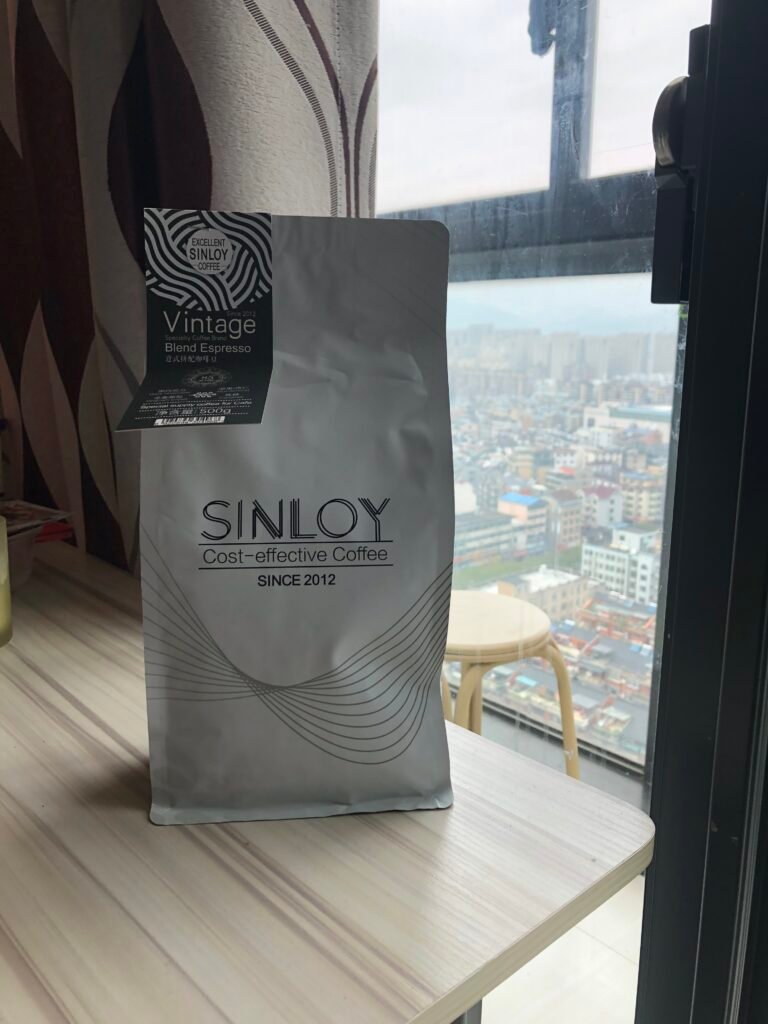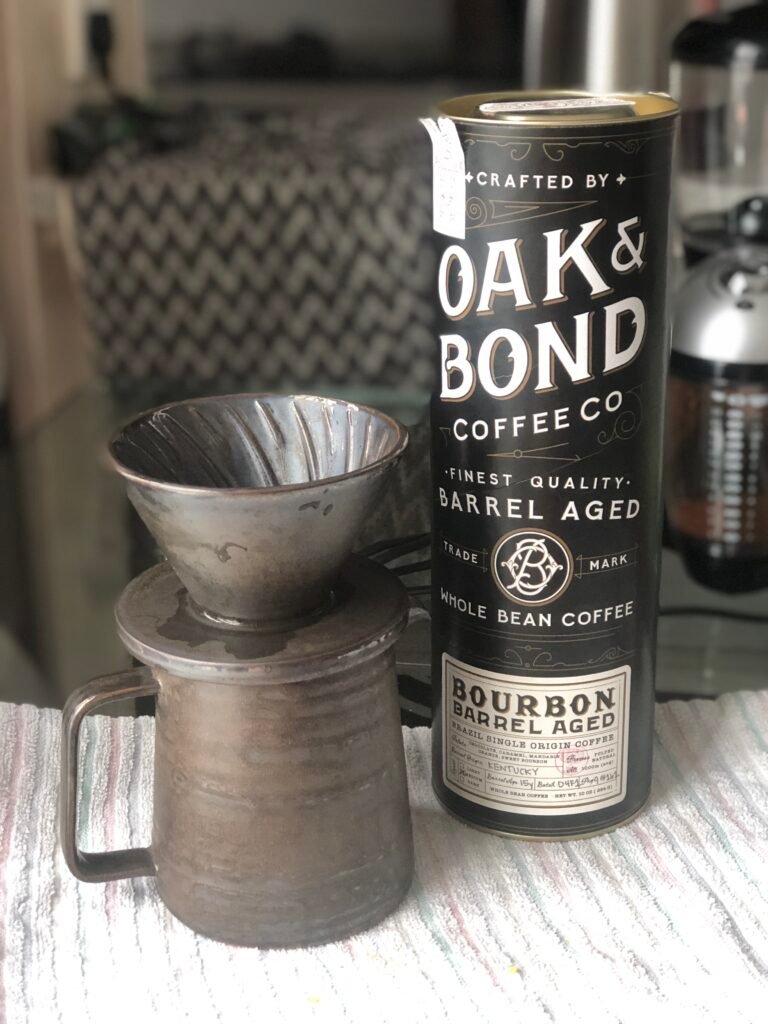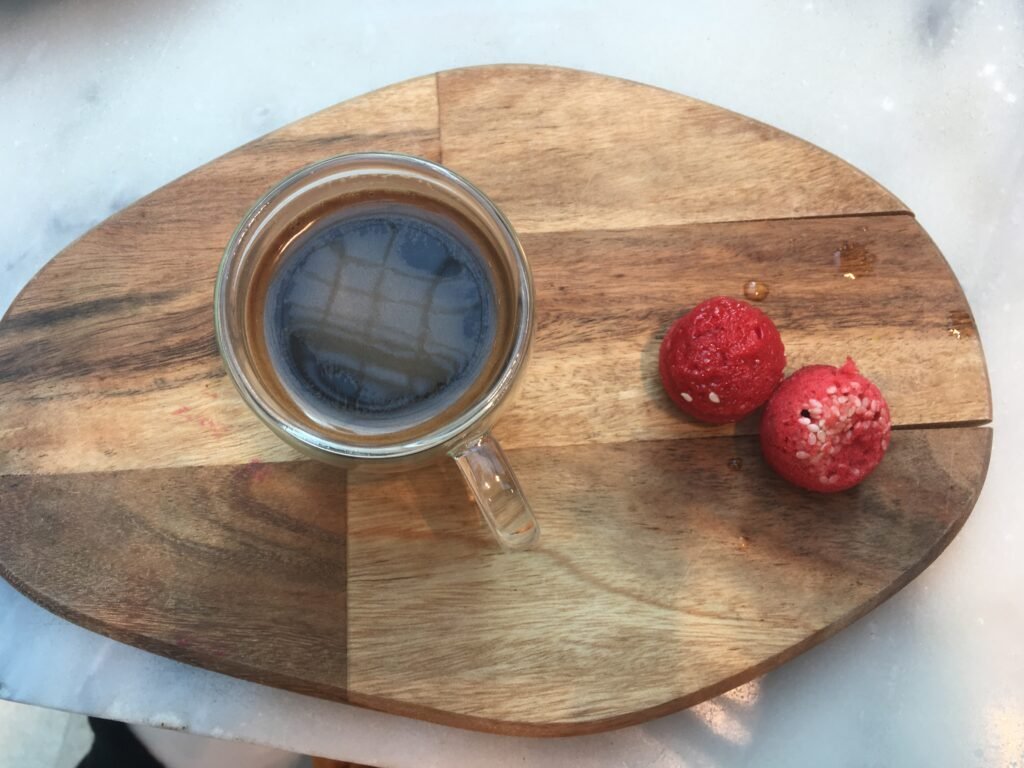* Spoiler Alert: Don’t buy it stale1.

Links may earn me a commission, but at no extra cost to you!
There’s a right and wrong way to drink coffee, but unfortunately, that standard starts before you even buy it. Read on to learn how to buy and drink it well.
A little historical background
I first fell in love with coffee as a teen with mono in high school. A friend had bought me Mark Pendergrast’s Uncommon Grounds the year prior, a huge tome meant as a joke due to my obsession with Starbucks and the cafe at Barnes & Noble. Bed-ridden for more than a month, I was drawn deeply into both the history of coffee as well as how it is made–and thus was born a lifelong obsession.

One of the most important things I learned from the book is that freshly roasted coffee beans give off gases, so unless they are left out in the open air to go stale for several days, they are complicated to ship. No matter what, whole beans will yield fresher coffee than ground since the surface area exposed to air is much smaller; this is always true, and it’s important to note that ground coffee will go bad much faster than whole beans you grind yourself, no matter how it’s stored.
That said, there are far better ways to store it than many realize, based on how the companies choose to package their beans. That plays a huge role in how fresh the coffee is. To be stored in a regular bag or can, coffee must be allowed to essentially go stale, or its gases would explode the can in which it’s stored. As a result, 90% of the affordable coffee you find for sale has gone bad (though not harmful!) before it ever appears on the shelves.
Higher-end stuff is stored via vacuum packing, nitrogen flushing (first used by Illy in 1963) or a bag with a one-way valve that expels oxygen. While vacuum packing was introduced in 1899, applied by the enterprising Hills Brothers to their coffee in the early 1900’s, and later bastardized by businesses to create disgusting bricks of “pre-staled” coffee, as Pendergrast explains it, the one-way valve came around in 19702.
If you drink coffee quickly and grind your own beans, vacuum packing can seal freshness in to a bag of a bit more completely than beans in a one-way valve bag that has not been vacuum sealed. Nitrogen flushing is even better because the coffee beans themselves are less in contact with the sides of the packaging and no oxygen remains, but none of this matters if the coffee has been ground and/or allowed to go stale prior to bagging it.
How does any of this relate to coffee in China?

There are two brands that I especially like in China, but one has a special place in my heart. Shangrila Farms, founded by the daughter of a diplomat as an NGO over a decade ago, was the only coffee from China that I was able to find and enjoy when I first came in 2014. Back then, I had yet to become fiendish enough to grind my own beans, and what was available ground in the local April Gourmet or Jenny Lou‘s was fresh enough that I could still detect satisfying aromas and flavors upon opening the bag and drinking the coffee inside.
In fact, this was the actual coffee that led me to being able to drink coffee black, as milk and cream were harder to come by in 2014 than they are now. When I returned to the US a year later, I brought some coffee with me, and always had fond memories of the brand.
By the time I returned in 2018, coffee, like wine, had overtaken the nation. Yunnan Province is now brimming with locally grown and roasted coffee, and unfortunately, after a year in Kuwait discovering coffee made with cardamom, I totally forgot about Shangrila. I found a bargain-priced wholesaler that had a B2C presence on Taobao. Its name? Sinloy. For years, I enjoyed their coffee, detecting enough fresh flavor and unique aromas in the brand to enjoy my daily cup black and free of additions. I even roped my workplace into stocking it and set up an informal plan to visit the company and tour their roastery one day.

Then… COVID?
A clarion cry from 2020 to late 2023 in China was 因为的疫情 (yinwei de yiqing; basically, because/due to the pandemic). It was a catch-all phrase to describe the myriad ways that the virus and the zero-COVID policy had led to interruptions in our daily lives.
Whether for that reason or others, to my serious chagrin, the quality of Sinloy Coffee seriously degraded by mid-2022. When I got the bags with their tantalizing one-way valves, I’d press down on the bag–a way to smell how fresh the beans inside are as any oxygen inside is expelled, and instead of a flowery bouquet of delightful, complex scents wafting out, it smelled… flat. Just okay. Essentially flavorless, with none of what had endeared it to me for years.
The roasting date is on every bag, and the company’s customer service on Taobao is still quick and reliable, so I don’t doubt that the beans are roasted fresh. As a result, I must surmise that the coffee itself has declined in quality…a real bummer.
As such, I recently decided to try Shangrila again. I stumbled across it on Meituan at April Gourmet, was delighted to see it, and ordered it. Since it was the evening, I had to wait until the next morning to try it, and boy, was I ready!

To my chagrin, it, too, tasted poorly. Even worse, unlike Sinloy’s one-way valves and roasting date, the bag I received didn’t even have a valve on it, essentially ensuring that the coffee was left to go stale before being packaged :-(.
I know that their bags used to have valves, which suggests a certain decline in quality. In addition, the field is now thick with competitors, so I have a whole new smorgasbord of options to choose from. Even so, I am saddened by the fact that two brands I have loved for 5-10 years are no longer good. #thedeathofadream

As I type, a part of me is wondering if COVID affected my taste buds for longer than I’ve realized. In December 2022, as all of Beijing burned with fever, I got COVID for the first time and experienced a discomfiting but short-lived inability to smell or taste coffee.
I already mentioned that I forgot about Shangrila for years, so it’s possible, right? #adhdbrain
Thankfully, I have had positive experiences since then with tasty coffee, in both the US and South Korea as well as China. Most pointedly, I have enjoyed the wonder that is Oak & Bond Coffee. After indulging in my coffee obsession for years, I got into American whiskey while living in Florida, and this company marries them both in a delectable coupling. My favorite one is the bourbon barrel-aged coffee; they also offer blends and roasts without any alcohol influence or barrel aging. Go forth and enjoy! You can find out more about them here (and none of this is affiliate-linked… I just really love their stuff).

I miss it right now; I brought back several bags from the US, but used them up well before winter… but I digress.
I knew before I went home for the first time in four years in August 2023 that my love affair with Sinloy was over, but I persisted until this last bag, sure that if I just tried a new coffee grinder, made sure to store it in a cool place, and just kept trying, it would be good again.
Alas, I was wrong. I am excited to try new brews but sad to see these faves fade into the ether. In any case, the Beijing coffee scene has a whole lot to offer, and I’m excited to share the good, bad and ugly in future posts.

So, how to drink coffee well?
- Buy coffee in whole bean form that has been recently roasted. If you don’t want to roast it at home, then buy ground coffee that has been recently roasted. Check dates on the bag, buy directly from roasters OR simply press on the bag to smell what comes out. Do it enough, and you can tell if the coffee inside is fresh or not. Good quality coffee beans or grinds have smells, just like wine, tasty food and brewed coffee.
- If you buy whole beans, grind them with a burr grinder. You can buy models for good prices here; this is the one that my go-to coffee expert in Beijing recommends.
- Store the coffee in a cool, dry place. Avoid adding moisture, light, heat or air (oxygen)–this is why the one-way valve is so important.
- When you brew the coffee, use room-temperature, filtered water, if you have it. It can be helpful to use an unbleached cone filter and a stainless-steel carafe, if available, if you take awhile to drink your coffee.
- When you go to brew the coffee, if you are making it via pour-over or Chemex, let it sit for a bit after boiling so that it’s slightly cooler. If it’s in the coffee maker, I recommend 1 ounce of coffee per 10-12 oz. of water.
- If you are making coffee manually, pour slowly over the grounds until they are evenly coated… and then do it again until the water is gone and the carafe is full. The key is to go slowly.
And, that’s it!
For now, if you wish to geek out about coffee, check out the resources below!

Coffee Packaging & Storage
- https://doctorcafetera.com/en/how-to-tell-if-coffee-is-stale-and-how-to-preserve-it
- https://mtpak.coffee/2021/03/nitrogen-flushing-vacuum-sealing-coffee/
- https://www.generon.com/using-nitrogen-gas-in-food-packaging/
- https://homeupgradeplace.com/guide-to-storing-coffee-vacuum-vs-valve-bags/
- More on China’s shift from tea to coffee in Yunnan Province: https://www.latimes.com/business/la-xpm-2012-dec-29-la-fi-china-coffee-20121229-story.html
- How to store your coffee: https://2caffeinated.com/best-way-to-store-coffee-beans/
🗞️ Want notified about future posts? Click here to sign up for notifications, and receive a Quick Reference Guide to China free, too!
Leave a Reply